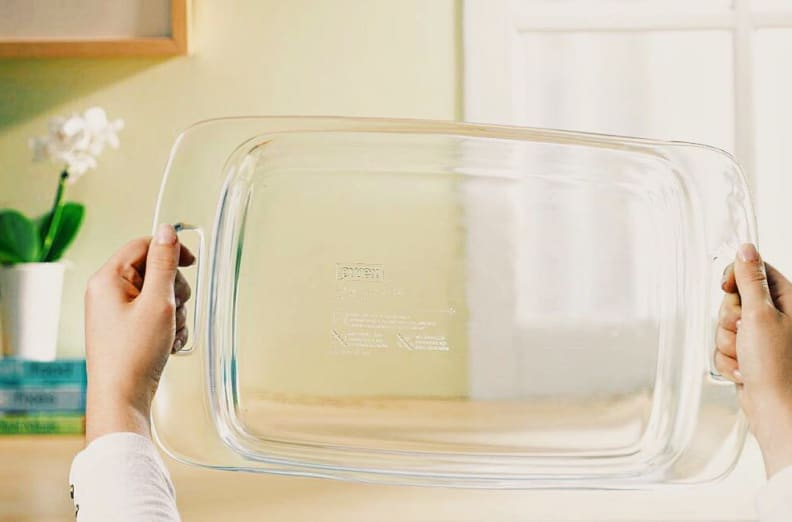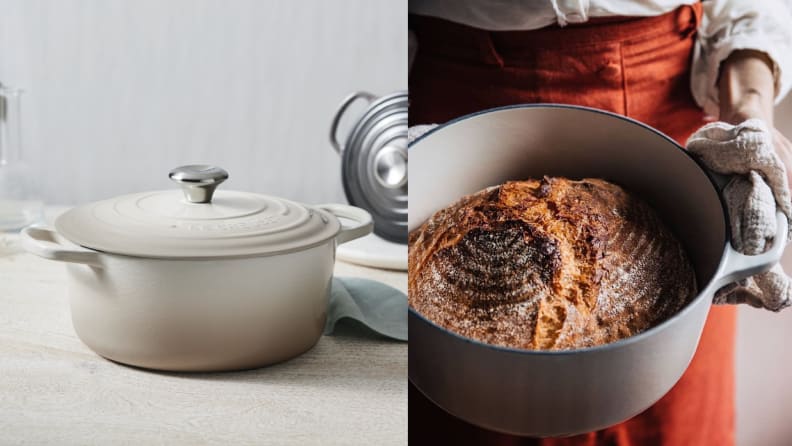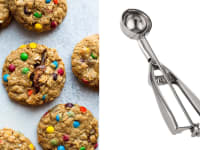You're using your Pyrex wrong—here's how to cook with it the right way
The truth behind reports of glass dishes exploding in the oven.
 Credit:
Getty Images / Torresigner
Credit:
Getty Images / Torresigner
Recommendations are independently chosen by Reviewed's editors. Purchases made through the links below may earn us and our publishing partners a commission. Prices were accurate at the time this article was published but may change over time.
There's nothing more comforting than my mom's chicken divan casserole, baked to crispy golden perfection and full of creamy, cheesy deliciousness. And I've recreated it many times —although it never tastes quite as good as hers—in the same 13-by-9-inch Pyrex dish she always used.
But according to some experts, that trusty glass casserole dish might not be the best or safest option for baking in the oven. In fact, there have been a few reports of Pyrex bakeware exploding in customers' ovens (yikes!). Here's what you need to know about the popular glass cookware and how to use it smartly and safely.
What happens when Pyrex goes in the oven

Not all casserole dishes are created equal.
Pyrex is made of glass, which can experience thermal shock when it's exposed to sudden temperature swings. And that thermal shock can make the glass expand and contract, making the dish shatter or explode if the change in temperature is extreme enough. On its website, Pyrex cautions, "Uneven heating, direct contact with heating elements, and sudden temperature changes (hot glassware coming in contact with something cool or wet, or cold glassware coming in contact with something very hot) can cause glass to shatter or break."
Here's a fun fact, though: How likely your dish is to break all depends on when it was produced. If your Pyrex was manufactured before 1998, it was made with borosilicate glass, which is specifically designed to be thermal shock-resistant. However, after 1998, Pyrex began being produced with regular soda-lime glass which is not thermal shock-proof. Read: It's much more sensitive to changes in temperature.
How to safely use your Pyrex glass dishes
Even if you have the original borosilicate glass Pyrex, all glass can be affected by extreme temperature changes to some degree. Avoid rapidly moving your Pyrex from hot to cold temperatures (like taking it directly out of the oven and putting it in the refrigerator) or placing it on your stovetop.
Pyrex also recommends preheating your oven before placing the glass dish inside so that it isn't exposed to a big change in temperature and to always let Pyrex come to room temperature before placing it in an oven, freezer, or refrigerator.
What's the best oven-safe alternative to Pyrex?

You can't go wrong with a Le Creuset dish.
If you're worried about putting any glass in the oven, consider using cast iron instead, which is a no-fail option. Our former kitchen and cooking writer, Valerie Li, says her personal favorite is the Le Creuset Dutch Oven (it's also one of the best Dutch ovens we've tested).
"I love the Le Creuset Dutch oven because of how versatile it is," she says. "I can slow cook meats, make soup, and even bake bread in it. My sourdough bread came out great in the Dutch oven!"
If you want to stick with the rectangular aesthetic, check out one of the best casserole dishes we've tested. Our favorite, the Great Jones Hot Dish, is dishwasher-safe, has handles that are easy to grip, and its retro design will look gorgeous on your dining room table when it's time to eat.
While we generally recommend avoiding Pyrex bakeware in the oven, we do love Pyrex glass containers as a good alternative to the plastic food storage solutions. They look classy, keep your food fresh, and are microwave-safe for easy reheating.
Get the Le Creuset Signature 5.5-quart Round Dutch Oven at Amazon starting at $349.95
Get the Great Jones Hot Dish for $75
You’re on your way to becoming a kitchen master. Take the next step and sign up for Chef's Course. You’ll get weekly tips, tricks, and recipes from top chefs sent straight to your inbox. It’s a whole master course for free.





